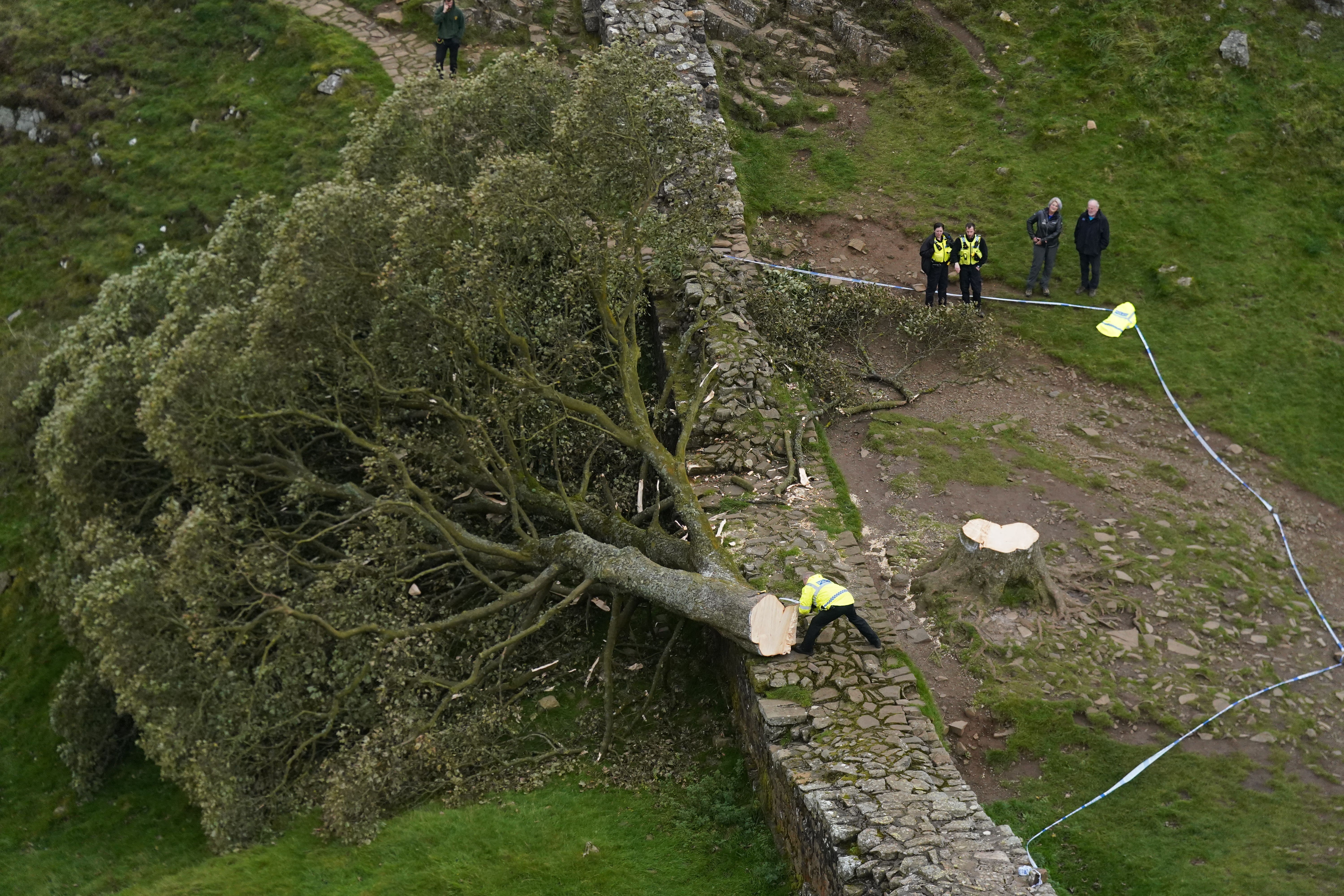ARTICLE AD BOX
Precious trees must be ‘listed’ for protection in a similar way to historic buildings, conservationists say, as the felling of the iconic Sycamore Gap tree and others brings the issue to national attention.
The call by the Woodland Trust to improve protection for thousands of trees that have important ecological, cultural and historical value comes after high-profile felling of landmark trees sparked public fury.
Two men have been found guilty of felling the “totemic” Sycamore Gap tree beside Hadrian’s Wall in September 2023, in a case that drew international attention.
And the Forestry Commission is assessing the felling of a 400-year-old oak in Whitewebbs Park, north London, in April, one of only about 100 oaks of that size in Greater London, which also sparked outrage.
The Woodland Trust said that existing protections such as tree preservation orders and requirements for felling licences had limitations and exemptions, such as the type and location of trees protected, and called for better safeguards for the country’s most precious trees.

The charity wants the Government to back a proposed law that would “list” heritage trees with exceptional historic, landscape, cultural or ecological importance, similar to the way historic buildings and monuments are listed or scheduled.
Under the Heritage Trees Bill, put forward by Baroness Young in the House of Lords as a Private Members’ Bill, a list of such trees would be created and maintained by a statutory agency.
Trees on the list would have provisions ensuring their protection, requiring landowners and occupiers to advertise the tree’s status and take steps to maintain and conserve it, and there would be additional or higher penalties for breaching new “heritage tree preservation orders”.
Adam Cormack, head of campaigns at the Woodland Trust, said the proposed law would provide “a consistent level of protection, conservation and active stewardship for a listed group of trees”.
Several thousand of the most important trees across England could be protected with the scheme, he said, while different legislation would need to be passed in Scotland, Wales and Northern Ireland.

He highlighted work in Poland, where a “green monuments” system preserves tens of thousands of trees, and a similar scheme in Romania.
Mr Cormack also pointed to a survey after the felling of the Sycamore Gap tree, which found 88% of people supported legislation to protect the most valuable trees.
He said: “Special trees provide a living backdrop to our national history and culture, as well as the stories and lives of our local communities, but they have few legal protections in the UK.
“Other European countries have recognised this with legislation in place to protect very old and important trees for their immense ecological, cultural and historical value.”
His colleague Jack Taylor, project lead for woods under threat, added: “There’s a strong national identity behind ancient and veteran trees.
“We are not one of the most wooded countries across Europe, but we do have a really strong population of ancient and veteran trees, and that resonates with people.
“When you see trees like the Whitewebbs oak, it stops most people in their tracks.”









 English (US) ·
English (US) ·